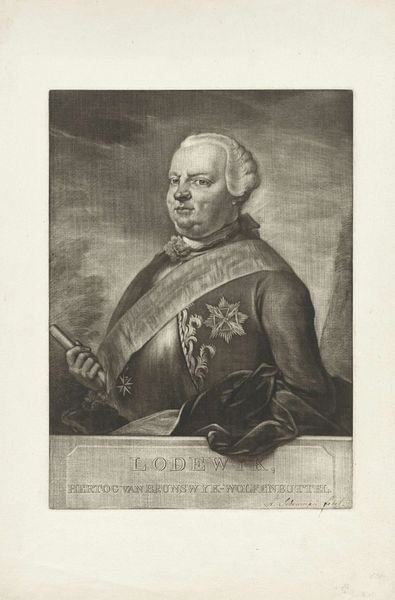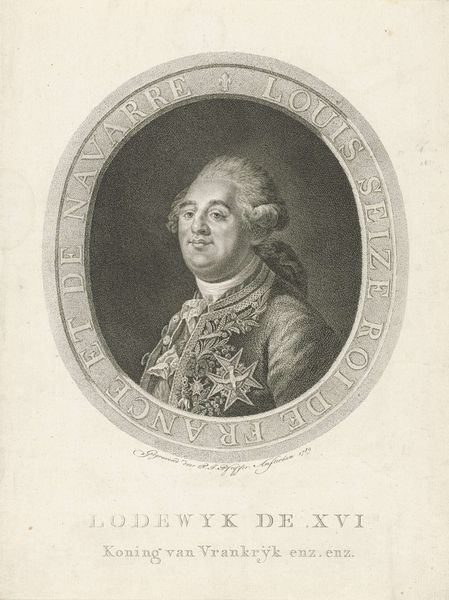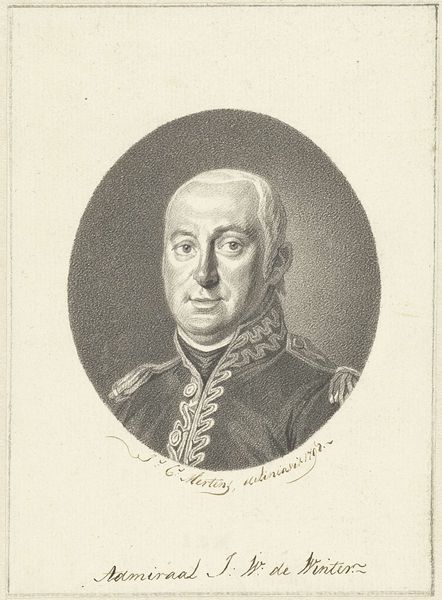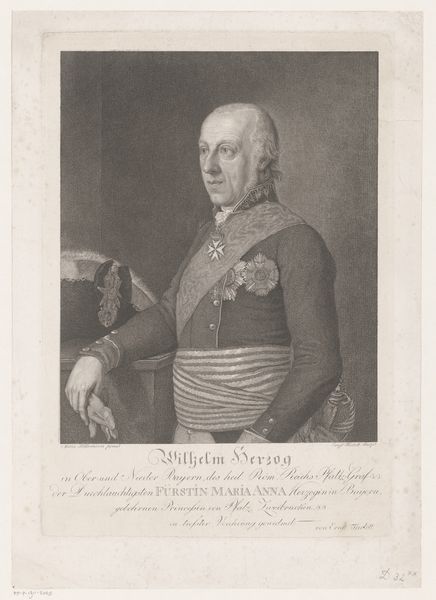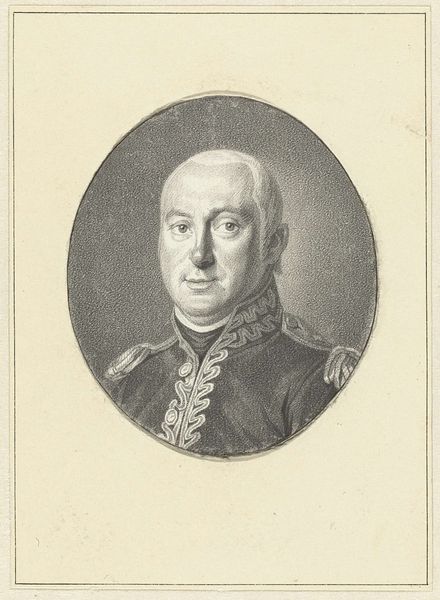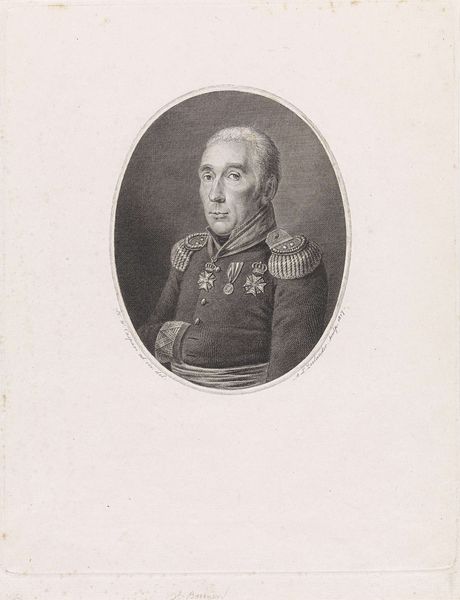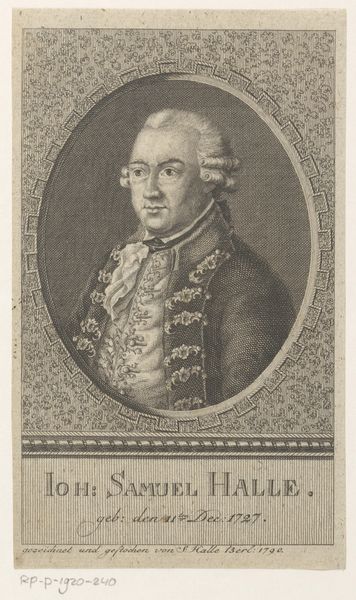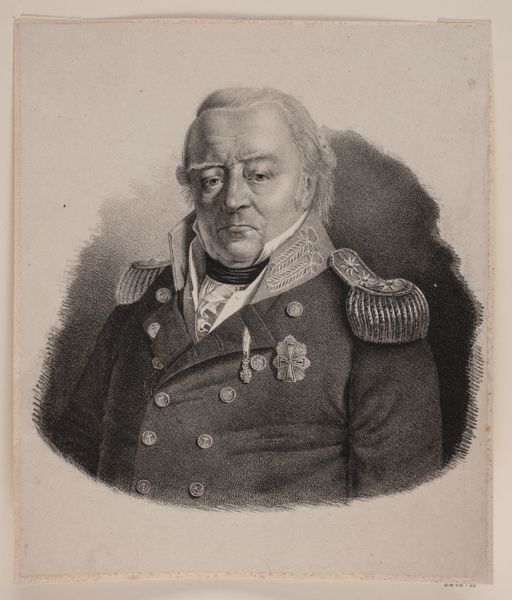
Portret van Lodewijk XVIII Koning van Frankrijk after 1814
0:00
0:00
print, engraving
#
portrait
#
neoclacissism
# print
#
old engraving style
#
history-painting
#
engraving
Dimensions: height 315 mm, width 270 mm
Copyright: Rijks Museum: Open Domain
Curator: The piece we're viewing is an engraving, "Portret van Lodewijk XVIII Koning van Frankrijk," created after 1814 by Antoine Alexandre Joseph Cardon. It's a study in contrasts, both stark and subtle. What's your initial read? Editor: Immediately, the abundance of ornamentation strikes me. Medals, sash, even the coat's detailing, feel almost overwhelming against the figure's somewhat placid expression. It's a visually busy portrait. Curator: The symbolism, particularly in the medals, conveys royal authority, recalling his lineage and restored power during a period of French history marked by dramatic upheaval. The French desired the return of the Monarchy! Editor: Indeed, and Cardon uses a precise, almost clinical line to delineate each element, which is typical for Neoclassical prints. The hatching is exceptionally tight, achieving subtle gradations in tone, but to what effect? Is it purely representational, or does it aim to evoke a specific feeling? Curator: I see the engraving as a calculated image crafted to inspire legitimacy, tapping into collective memory of monarchy. Look at his distant gaze, evoking statesmanship. This connects with the restoration movement within French society at the time. The symbols of royal authority helped reconstruct the shattered image of the Bourbon monarchy, using visual communication to rewrite recent, unsettling historical memory. Editor: It's as though every mark is deliberately placed to achieve a certain effect. This reminds me of structuralist interpretation which would argue that such meticulous detailing subordinates individuality to the formal system of representation. The print thus reasserts the traditional code of the monarchy above everything. Curator: Yes! His very physical presence becomes secondary. Ultimately this becomes an object about authority and collective will as perceived in France. It also embodies both a return to, and the challenges of reinstating cultural continuity during a period of political restructuring and national identity reformation. Editor: This print succeeds formally and politically, I suspect. Looking closer I start to feel I understand a little bit more of that transformative, revolutionary era. Curator: A small window into a fractured era, through the focused lens of visual intention.
Comments
No comments
Be the first to comment and join the conversation on the ultimate creative platform.

